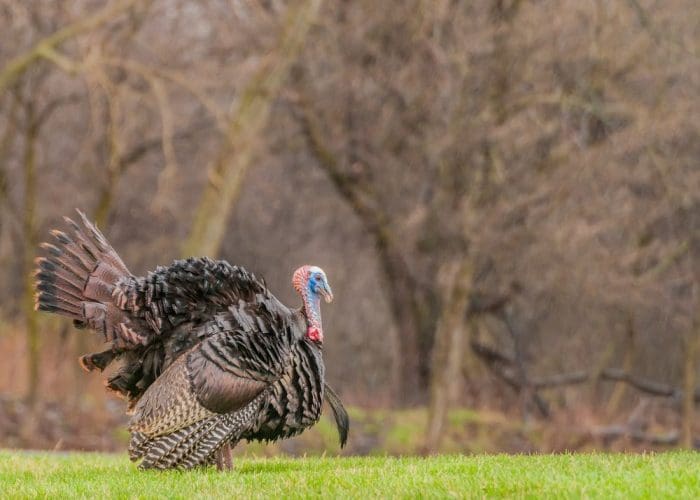Turkey hunting is an incredibly popular sport that draws in hunters from diverse backgrounds. In addition to having excellent shooting skills and proper hunting gear, like turkey hunting camo, an understanding of turkey anatomy is required for success as a hunter. By learning where to aim and how to shoot, you can ensure a humane and lawful kill.
Understanding turkey anatomy
Before taking a shot, having a clear grasp of turkey anatomy is vital. The vital zone, which ensures a quick and humane kill, includes the head, neck, and a portion of the body close to the lungs or heart. Aiming for this area maximizes the chances of an effective shot while minimizing the risk of injuring the bird.

Shot placement techniques
Aiming for the head and neck
When aiming for the head and neck, direct your shot towards the base of the turkey’s neck, just above the breast. This precise shot placement severs the spinal cord and major blood vessels, resulting in immediate incapacitation.
Shots on broadside turkeys
Aim for the area just behind the wing if the turkey is broadsided, with its body perpendicular to you. It ensures that your shot penetrates the vital organs, including the heart and lungs.
Shots on front-facing turkeys
When facing a turkey, target the base of the neck where it meets the body. This shot placement allows your projectile to hit the vital organs while avoiding dense feathers.
Shots on rear-facing turkeys
For a turkey facing away from you, focus your shot on the base of the spine, just above the tail feathers. This placement aims to sever the spinal cord, causing immediate incapacitation.
Shots fired at strutting turkeys
Strutting turkeys have their tail feathers fanned out, and their bodies lowered. Aim for the center of the body, just above the base of the tail feathers. It maximizes the chances of hitting the vital organs.
Choosing the right firearm and ammunition
Selecting the appropriate firearm and ammunition plays a critical role in achieving effective shot placement during turkey hunting. Shotguns are the most commonly used firearms for this activity due to their wide pattern spread, increasing the likelihood of hitting the vital zone. A 12- or 20-gauge shotgun with a tight choke is recommended for improved accuracy and a longer effective range. For those interested in exploring other ammunition options, the 460 S&W Magnum offers a powerful choice for various hunting scenarios.
If however you’re a more experienced shooter and have better accuracy, it may be preferable to use a hunting rifle or smaller calibre handgun such as the glock 19x, as these will do less damage to the body of the bird. This can allow to you gather more meat from the kill without needing to pick pieces of the shot out that would be present from a shotgun cartridge.
Preparing for the shot
The key to a good hunt is preparation. Find a safe, secure, and unobstructed place to fire at your target. Staying hidden is critical to avoiding scaring the turkeys away. You should conceal yourself by mastering camouflage methods and dressing in appropriate clothing. Since turkeys have poor night vision, this improves your chances of sneaking up on them and killing one.
Practicing accuracy
Accurately placing your shots is a top priority. If you want to improve and keep up your shooting abilities, you must spend time at the range regularly. Hunting situations may be practiced by setting targets at varying distances and firing from various locations. You’ll gain expertise with your rifle and confidence in your shots if you practice their trajectories beforehand.
Wrap up
Accurate shot placement is essential for ethical turkey hunting. Knowing the turkey’s anatomy and employing excellent shot placement strategies will allow you to seize the bird swiftly and humanely while maximizing the amount of meat harvested.


